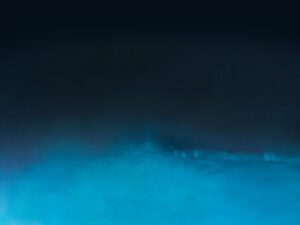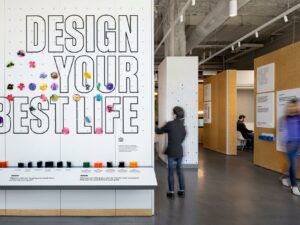Hormazd Narielwalla (b. 1979) is a London-based artist who works in collage. Narielwalla uses bespoke Savile Row tailoring patterns, and their antiquarian and contemporary trade counterparts, to create artworks exploring the body in abstract form. His practice began in the workrooms of the tailoring firm Dege & Skinner in London’s Savile Row, with an artist’s book, Dead Man’s Patterns (2008), which reflects on the bespoke suit patterns of deceased customers. His artworks propose a new interpretation of tailoring patterns as interesting abstracted drawings of the human form. Freed from function they are drawings ahead of their time, anthropomorphic in origin and beautifully abstract in isolation.
Since Narielwalla’s first Solo Show, Study on Anansi, was sponsored and exhibited by Sir Paul Smith in 2009, he has had critical and commercial success in the art world. In 2013 Saatchi Art online magazine announced Narielwalla as ‘One to Watch’ and in 2014 he won the Saatchi Art Showdown prize – The Body Electric. Narielwalla holds a PhD from University of Arts, London, and his work is held in public and private collections worldwide, including the British Library; the National Art Library, INIVA; Fashion Institute of Technology, New York; and Parsons School of Art & Design, New York. We speak to the artist about his practice.
A: What inspired the tailored motifs and deconstruction/abstraction of clothing represented in your work?
HN: My practice began with a simple gift – a set of bespoke suit tailoring patterns of a customer now deceased, cut by the Savile Row firm Dege & Skinner. The tailors no longer needed the clothing blocks, as the ‘body’ no longer existed. In normal circumstance they would have been shredded. This had a profound effect on me and I endeavored to immortalise the patterns by making works of art that will become timeless and will live on for generations to come. That particular pattern set inspired me to create an artist’s book, Dead Man’s Patterns (2008) and thus began a practice making collage artworks out of tailoring patterns. I see them as anthropomorphic, the closest geometrical abstraction of human bodies. They allow me to communicate the human form (male and female) as dots, curves and geometrical lines. I view tailoring and sewing patterns as beautiful drawings in themselves that trace a history since the mid 16th century. They have carried with them history, knowledge, a craft and the human form for centuries. The patterns tell me what to do, in that I respond to them when making my collages.
A: Do you feel that individual garments have a distinct personality, having described the patterns in your images as anthropomorphic?
HN: Yes I do. The Savile Row tailoring patterns that I so often acquire upon the death of customers are bespoke. On the other hand, the antique French sewing patterns which I have extracted from magazines are mass-produced. However, so far I have access to only one pattern sheet, and therefore it allows me to create a collage that would have represented one female form. Each of my collages stands in its own right as an individual piece representing an individual body. Recently I was commissioned by the Hyatt Regency London – the Churchill to make a permanent work from Churchill’s suit tailoring patterns. His tailor Henry Poole had a record of his unique measurements, allowing them to cut an accurate pattern. I played with these adding blue, grey and black papers to create a unique collage that would represent Churchill in abstracted form. I am also in conversation with a collector who has his suits made for him. He is interested in giving me his patterns to create a collage that depicts his unique personality.
A: In your work you have used traditionally male and female garments to represent gender. Have you considered creating opposing pieces that challenge the gender stereotypes that clothing can perpetuate?
HN: Gender issues are present in my work in the subtlest way. In 2012 I acquired bags full of lingerie patterns from Aura Lingerie, a successful London-based firm. I decided to create collages depicting female anatomy for a series Lady Gardens. However, it was also a work that reflected my own feminine side. They were not self-portraits because I don’t have a vagina, rather works exploring the concept of “what if I did….”! As a gay man I have never seen one in reality, so I decided to interview women to describe their anatomy, as I wanted the collages to take form from a female perspective. The same patterns were also used to make camp portraits of men and these series were titled Pretty Boys and Taikomochi (Male Geisha). Recently I spotted a menswear pattern printed in the same form as the French sewing women’s wear patterns I have previously used, and I think challenging gender stereotypes will perhaps be more evident in this particular piece.
A: Do you think that the production of clothing plays a large and crucial part in multiculturalism? And how does this relate to the way we see the human form?
HN: Clothing is a key ingredient to expressing any culture or sub-culture, and yes I do think it contributes to multiculturalism. You can look at the modest clothing adopted by Muslim women, and even within that community there are several sub-divisions of clothing illustrated so very well by author Reina Lewis in her book Modest Fashion. And I believe the history of pattern cutting can reveal how our bodies have changed. I analysed uniforms from the British Raj archived at the National Army Museum for my PhD research and some of the waists measured 24 inches. People were much more petit. In respect to the human form, of course we are all genetically different. There are differences in body types from Masai warriors to European bodies. In my tailoring pattern collage artworks the body is represented in abstracted form as a universal entity. I am interested in cultural references – for instance I used Indian inspired papers/materials in a series Haute Collage, which explores the experience of a European-French woman on her travels to India, but I employed French sewing patterns for the base of the collages.
View more of Hormazd’s work at www.narielwalla.com and www.saatchiart.com.
Follow us on Twitter @AestheticaMag for the latest news in contemporary art and culture.
Credits
1. Hormazd Narielwalla, First Kiss, 2015. Courtesy of the artist.
2. Hormazd Narielwalla, Various collage works, 2015. Courtesy of the artist.




